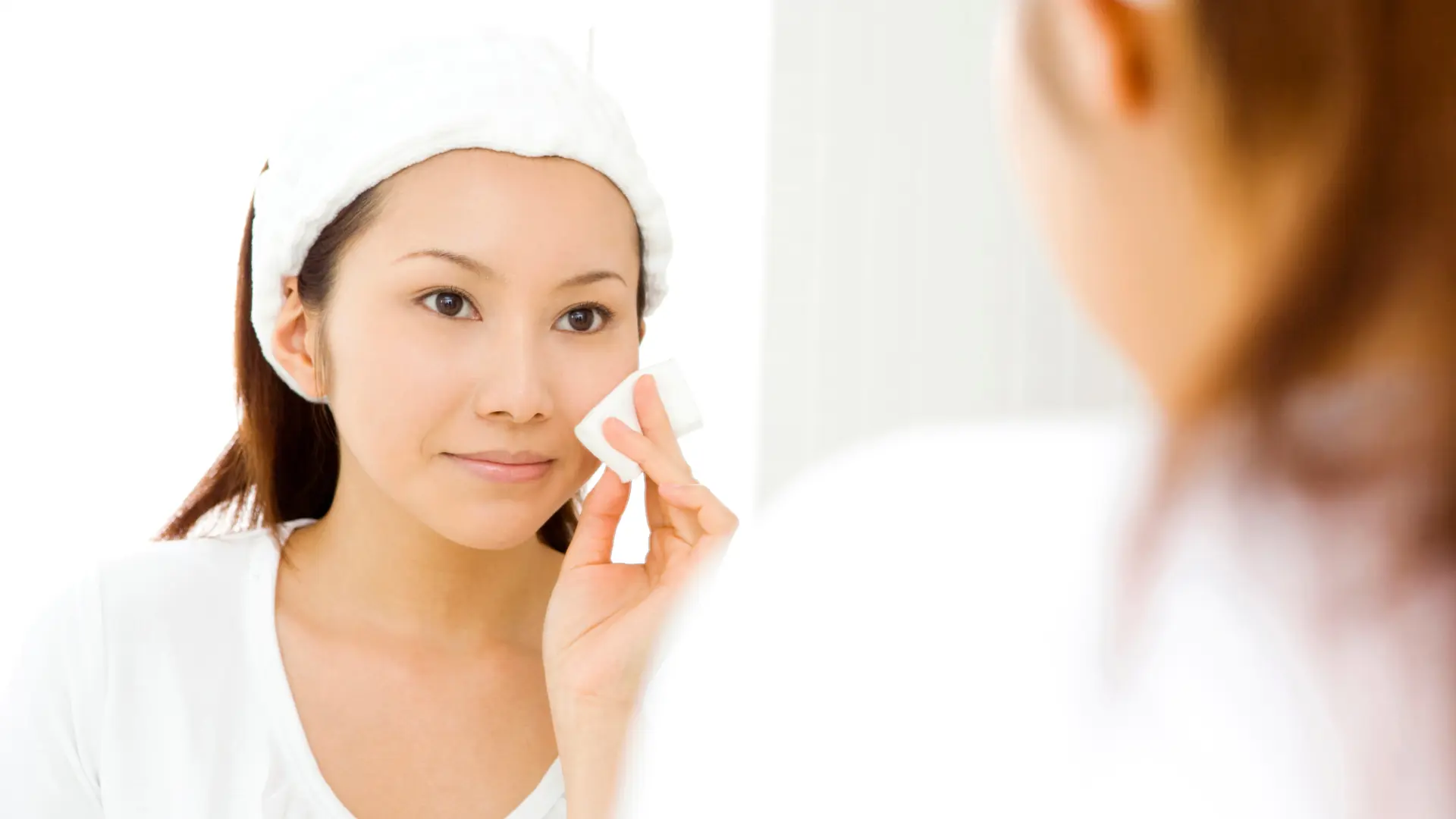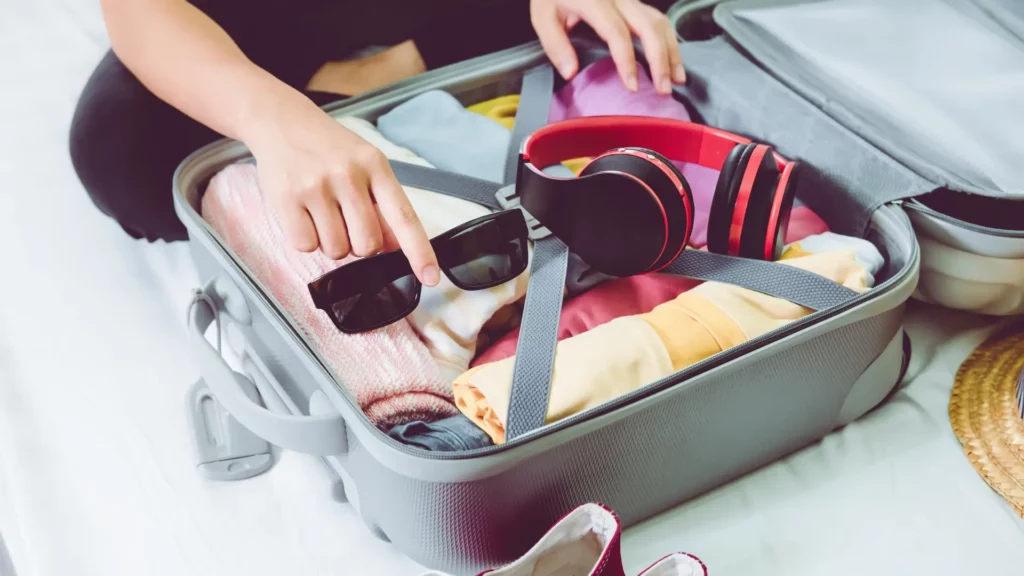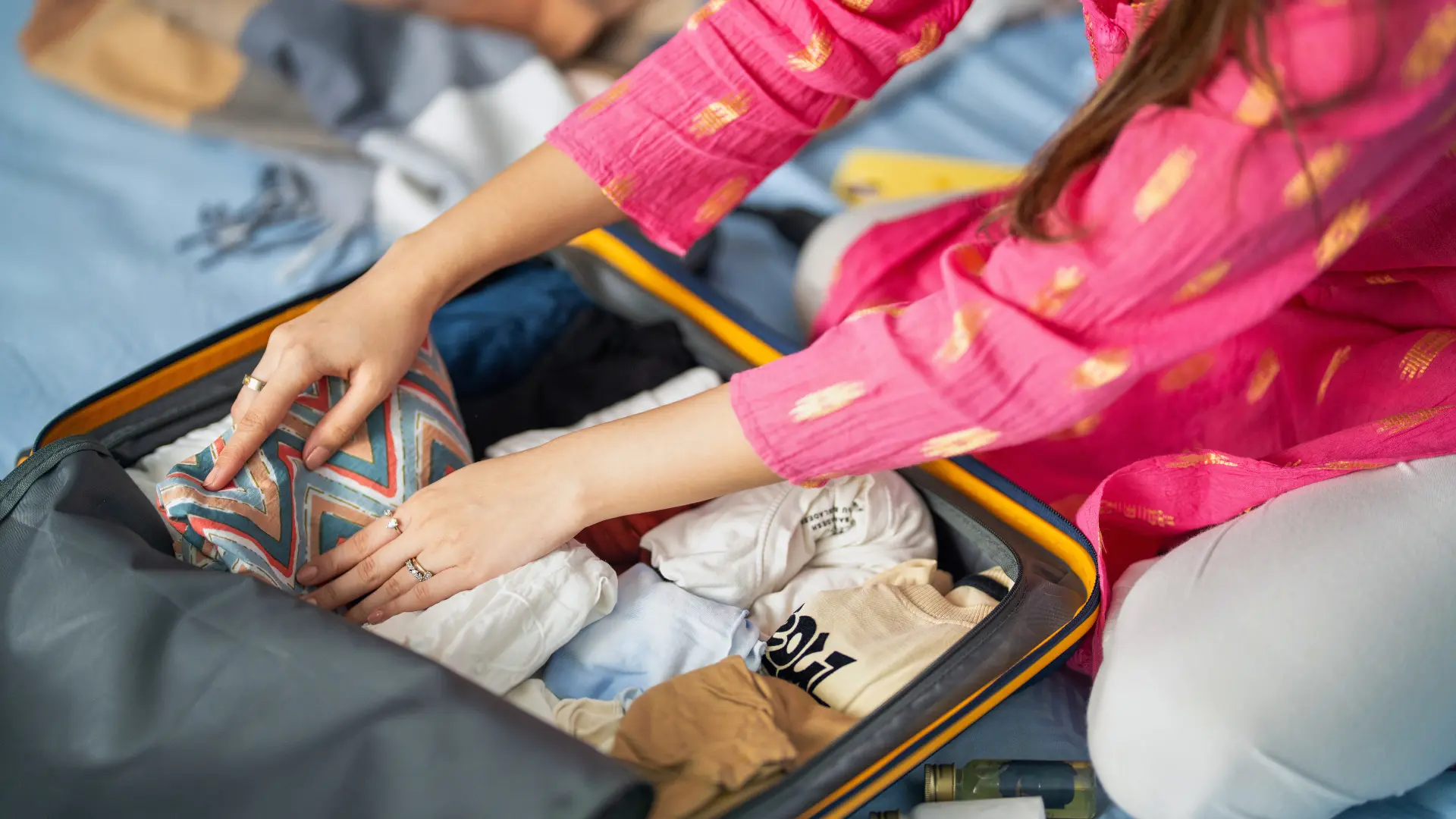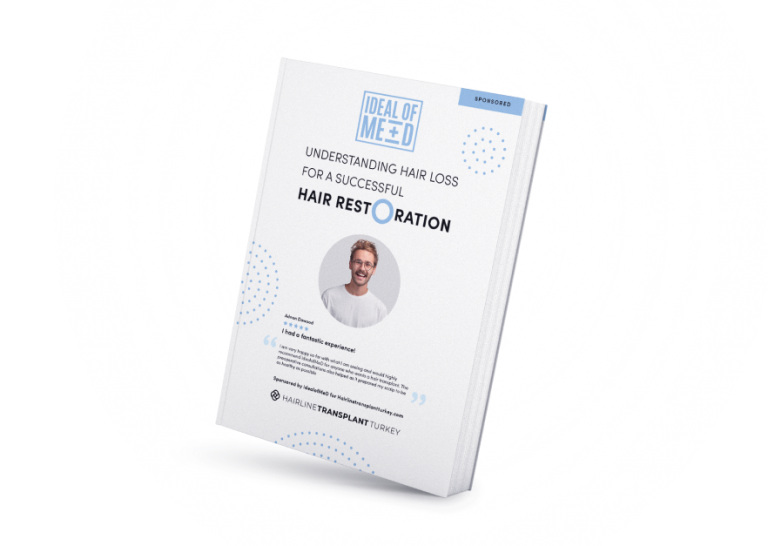Preparing for different climates after a hair transplant is crucial for ensuring a smooth and comfortable recovery. Newly transplanted follicles are highly sensitive, and exposure to varying weather conditions—whether extreme heat, cold, humidity, or dryness—can impact healing.
Without proper precautions, factors like excessive sweating, sun exposure, or scalp dryness may lead to irritation, discomfort, or complications.
When preparing for different climates, packing must go beyond basic travel essentials. Scalp protection, hydration, and comfort should be top priorities. A tropical destination calls for breathable headwear and sun protection, while colder regions require extra hydration and warm but non-restrictive coverings.
Proper preparing for different climates also includes choosing the right medical supplies and skincare essentials to prevent dryness, irritation, or infection. Understanding how climate affects healing allows patients to adjust their packing strategy and recovery routine accordingly.
By preparing for different climates in advance, hair transplant patients can confidently travel, ensuring their scalp remains protected, comfortable, and on track for a successful healing process.
Understanding How Climate Affects Hair Transplant Recovery
Hair transplant recovery is a delicate process, and external environmental factors—such as temperature, humidity, and UV exposure—can significantly impact healing. Since the scalp remains highly sensitive in the weeks following the procedure, it is essential to understand how different climates influence recovery and how to mitigate potential risks while traveling.
Temperature and Healing
Extreme temperatures—both hot and cold—can interfere with the healing process.
- Hot climates can lead to excessive sweating, which may irritate the scalp, clog hair follicles, and increase the risk of infection. Sweat also contains salt, which can cause discomfort and dryness.
- Cold weather can constrict blood vessels, slowing blood circulation to the scalp, potentially delaying healing. Additionally, exposure to freezing temperatures can cause dryness, flakiness, and irritation, leading to discomfort and increased sensitivity.
Humidity and Scalp Health
Humidity levels play a crucial role in maintaining a balanced healing environment:
- High humidity can lead to excessive sweating and bacterial growth, increasing the risk of scalp infections. It can also make the scalp feel greasy, which may cause discomfort.
- Low humidity in dry climates can strip the scalp of moisture, leading to dryness, irritation, and even flaking. This can result in an itchy sensation, which is problematic since scratching the scalp can damage newly implanted grafts.
UV Exposure and Sun Damage
The scalp remains highly vulnerable to sun damage after a hair transplant. Prolonged exposure to direct sunlight can cause:
- Increased redness and inflammation, delaying healing.
- Hyperpigmentation, where the skin darkens unevenly.
- Potential graft damage, as excessive heat can weaken the newly implanted follicles.
Wearing loose-fitting, breathable hats or scarves and applying a dermatologist-approved non-greasy, fragrance-free sunscreen (SPF 30+ or higher) can help shield the scalp from UV damage.

Tom, Lead Clinic
Researcher and Writer
Hi there! My name is Tom and I’ve been living in Turkey for almost a decade. Besides advocating the medical tourism industry in Turkey I also love to share my travel tips for Turkey. I know all the hidden gems and best ways to enjoy Turkey.
While you’re here – did you know that almost 60% of all hair transplants each year happen in Turkey?
Learn all about getting a hair transplant in Turkey including female hair transplants on my dedicated pages.
General Aftercare Considerations for Travelers

Regardless of the destination, travelers should prioritize:
- Gentle hair care: Avoid harsh shampoos, excessive washing, or aggressive towel drying.
- Hydration: Drink plenty of water to maintain scalp moisture, especially in hot or dry climates.
- Comfortable headwear: Ensure head coverings are breathable and not too tight.
- Avoiding strenuous activity: Heavy sweating or excessive movement can irritate the scalp.
- Sleeping precautions: Use a travel-friendly neck pillow to prevent direct contact with surfaces that may harbor bacteria.
By understanding how different climates affect healing, hair transplant patients can take proactive steps to ensure a smooth and comfortable recovery, regardless of where their travels take them.
Essential Packing List for All Climates
Regardless of the climate, hair transplant patients must prioritize a well-packed travel kit that supports their healing process. The right essentials can help protect the scalp, prevent complications, and ensure a smooth recovery while traveling.
Below is a comprehensive packing list that covers all necessary medical supplies, scalp protection, skincare, and comfort essentials for any destination.
Medical Essentials
A hair transplant requires ongoing care in the weeks following the procedure, making medical essentials a top priority when packing. Be sure to include:
- Prescribed Medications – Antibiotics (if prescribed), anti-inflammatory drugs, or any other medication recommended by your surgeon.
- Antiseptic Wipes or Solution – To clean the scalp gently and prevent bacterial infections, especially in humid environments.
- Mild Shampoo (Sulfate-Free) – A gentle, surgeon-approved shampoo to avoid irritation while keeping the scalp clean. Look for travel-sized bottles if possible.
- Saline Spray – Helps keep the scalp hydrated, prevents dryness, and soothes irritation, particularly in dry or cold climates.
- Pain Relievers (Over-the-Counter or Prescribed) – Essential for managing mild discomfort during travel.
Head Protection
Protecting the scalp is crucial, especially in harsh weather conditions. Pack:
- Loose-Fitting Hats or Caps – Breathable materials like cotton or bamboo help shield the scalp from sun exposure while allowing airflow. Avoid tight caps that might rub against the grafts.
- Scarves or Bandanas – Lightweight scarves can provide extra sun protection or warmth in colder climates without putting pressure on the scalp.
- UV-Protective Headwear – For those traveling to sunny destinations, opt for a UPF-rated hat to shield the scalp from harmful UV rays.
Skincare Essentials
Post-transplant scalp care involves keeping the skin moisturized and protected from environmental stressors. Essential skincare items include:
- Fragrance-Free Sunscreen (SPF 30+ or Higher) – A gentle, non-greasy formula to protect against sun damage without clogging pores.
- Moisturizer – For preventing dryness and flakiness, especially in cold or dry climates. Choose a light, non-comedogenic moisturizer.
- Cooling Gel or Aloe Vera Spray – To soothe any irritation or redness caused by weather conditions.
Comfortable Clothing and Accessories
Choosing the right travel attire is just as important as medical care to avoid discomfort and irritation. Pack:
- Loose-Fitting, Breathable Clothing – Avoid tight collars, hoods, or anything that might press against the scalp. Cotton or moisture-wicking fabrics are ideal.
- Front-Button or Zip-Up Shirts – Easier to wear and remove without pulling over the head, reducing the risk of accidental graft disturbance.
- Soft Sleepwear – Comfortable and breathable pajamas to prevent irritation during sleep.
Travel-Friendly Pillow and Neck Support
Sleeping and resting comfortably while traveling can be a challenge, but these items help:
- Travel Neck Pillow – Helps keep the head elevated and prevents direct scalp contact with surfaces (useful during flights or car rides).
- Silk or Satin Pillowcase – Reduces friction on the scalp and prevents irritation. For long trips, bringing your own pillowcase can be beneficial.
Final Packing Tips
- Keep all liquid items in travel-sized containers if flying to comply with airline regulations.
- Store medications and essential products in carry-on luggage in case of lost baggage.
- Consider packing a small, portable humidifier if traveling to a dry climate.
- If staying at a hotel, check if they provide fragrance-free toiletries to avoid unnecessary irritation.
By packing strategically, hair transplant patients can ensure optimal healing while traveling, no matter the climate.
Packing for Hot and Humid Climates

Traveling to a hot and humid destination after a hair transplant requires extra precautions to protect the scalp from excessive sweating, sun exposure, and potential infections. High temperatures and increased moisture in the air can slow healing if not properly managed.
hnbm This section covers essential packing tips and strategies to ensure a comfortable and safe recovery while in a warm, humid environment.
Risks of Hot and Humid Climates
Heat and humidity pose specific challenges for hair transplant patients, including:
- Excessive Sweating – Sweat contains salt, which can irritate the scalp, cause discomfort, and potentially clog hair follicles, leading to folliculitis (inflammation).
- Sun Exposure – UV rays can damage delicate grafts, cause redness, and increase the risk of hyperpigmentation or sunburn.
- Clogged Follicles – Humidity can mix with sweat and natural oils, making the scalp feel greasy and prone to irritation.
- Bacterial and Fungal Infections – The combination of moisture and heat creates an ideal environment for bacterial growth, increasing the risk of scalp infections.
Packing Must-Haves for Hot and Humid Weather
To protect the scalp and stay comfortable, include the following essentials:
Breathable Fabrics
- Lightweight, Loose-Fitting Clothing – Cotton, linen, or moisture-wicking fabrics allow airflow and prevent overheating.
- Front-Button or Zip-Up Shirts – Easier to wear without disturbing the scalp.
Cooling and Sweat Control
- Cooling Wipes – Alcohol-free, fragrance-free wipes help freshen the scalp and remove excess sweat without irritation.
- Sweatbands (Soft and Loose-Fitting) – Helps absorb sweat without putting pressure on the scalp. Opt for moisture-wicking materials.
- Extra Scalp Sunscreen – A non-greasy, fragrance-free SPF 30+ sunscreen formulated for sensitive skin. Stick sunscreens or spray options can be more convenient for reapplication.
Best Head Coverings for Sun and Heat Protection
Choosing the right head covering is crucial for shielding the scalp from sun damage while preventing overheating.
- Loose-Fitting, Breathable Caps – A lightweight hat with a wide brim for shade, made from breathable materials like cotton or linen. Avoid tight caps that trap heat.
- UPF-Rated Hats – Provides extra sun protection while allowing ventilation.
- Lightweight Scarves or Bandanas – Can be used to lightly drape over the head for protection without suffocating the scalp.
Hydration Strategies for Optimal Healing
Proper hydration is essential to support healing, especially in hot climates.
- Drink Plenty of Water – Aim for at least 2–3 liters per day to keep the body and scalp hydrated.
- Electrolyte Drinks (Without Excess Sugar) – Helps replenish lost minerals if sweating a lot.
- Hydrating Saline Spray – Keeps the scalp moisturized and prevents dryness caused by heat.
- Avoid Alcohol and Caffeine – Both can dehydrate the body and slow healing.
Preventing Infections in Tropical Conditions
Hot and humid climates increase the risk of scalp infections due to excess sweat and bacteria. Take these precautions:
- Use Antiseptic Wipes or Spray – Clean the scalp gently if sweating excessively.
- Avoid Touching the Scalp – Hands carry bacteria that can cause infections.
- Shower Regularly with Mild Shampoo – Wash sweat away while keeping the scalp clean without over-drying.
- Stay in Air-Conditioned or Well-Ventilated Areas – Reduces excessive sweating and bacterial buildup.
Final Tips
- Plan outdoor activities in the early morning or evening to avoid peak sun hours.
- Keep a small travel fan to help stay cool when outdoors.
- Reapply sunscreen every 2–3 hours when exposed to sunlight.
- Bring a lightweight towel to pat away sweat without rubbing the scalp.
By following these packing tips and precautions, hair transplant patients can enjoy their travels while ensuring a smooth, irritation-free recovery in hot and humid climates.
Packing for Cold and Dry Climates

Traveling to a cold and dry climate after a hair transplant presents unique challenges, particularly related to moisture loss, scalp sensitivity, and exposure to harsh weather.
Low humidity levels and cold air can dry out the scalp, leading to irritation, flakiness, and discomfort. Additionally, the risk of frostbite in extremely cold conditions makes proper scalp protection essential.
This section outlines key risks, must-have travel items, and strategies to maintain scalp health while ensuring a smooth recovery in colder regions.
Risks of Cold and Dry Climates
- Dryness & Scalp Irritation – Low humidity can strip the scalp of moisture, causing itchiness, redness, and flakiness, which may tempt patients to scratch (which should be avoided).
- Frostbite Risks – In freezing temperatures, prolonged exposure can damage skin tissue, making the already sensitive scalp more vulnerable.
- Static Electricity – Dry air combined with certain fabrics can cause static buildup, leading to scalp discomfort and irritation.
- Blood Circulation Issues – Cold weather can constrict blood vessels, potentially slowing the healing process.
Packing Must-Haves for Cold and Dry Weather
Proper packing helps prevent dryness, irritation, and discomfort.
Hydration & Scalp Protection
- Hydrating Scalp Serum or Moisturizer – Choose a fragrance-free, non-greasy, dermatologist-approved product to keep the scalp moisturized.
- Saline Spray – A quick and easy way to refresh and hydrate the scalp during travel.
- Lip Balm & Skin Moisturizer – Cold climates can also dry out the skin and lips, so a hydrating lotion and lip balm are essential.
Head Protection & Warm Clothing
- Warm but Breathable Hats – Soft, non-tight beanies made of cotton, fleece, or wool blends provide warmth without excessive pressure. Avoid rough-textured wool that may irritate the scalp.
- Silk or Satin-Lined Hats – Helps reduce friction and static electricity.
- Lightweight Ear Muffs or Headbands – If you prefer not to wear a hat all the time, soft earmuffs can protect your ears from the cold without disturbing the scalp.
Humidifiers for Hotel Stays
- Travel-Sized Humidifier – In hotels or homes with heating systems, air tends to be extremely dry. A small humidifier can help maintain moisture in the air and prevent scalp dryness.
- Room Hydration Tips – If a humidifier isn’t available, placing a bowl of water near a heater or using a damp towel over a radiator can help add moisture to the air.
Avoiding Static Electricity & Dryness-Induced Irritation
- Use Anti-Static Hair Products – A light, oil-free anti-static spray can help prevent irritation.
- Wear Clothing with Natural Fibers – Cotton, silk, and wool blends reduce static, while synthetic fabrics (like polyester) tend to generate more static buildup.
- Avoid Over-Drying Hair – If washing your scalp, use lukewarm water instead of hot water, as extreme heat can strip away moisture.
Layering Clothing Without Pressing on the Scalp
Layering is essential for staying warm, but care must be taken to avoid materials that press against the scalp or cause irritation.
- Base Layer: A moisture-wicking thermal shirt to keep the body warm.
- Mid Layer: A breathable sweater or fleece to retain warmth without overheating.
- Outer Layer: A windproof and insulated jacket to protect against extreme cold.
- Scarf Positioning: If wearing a scarf, keep it loosely wrapped to avoid excessive pressure on the scalp.
Final Tips
- Avoid prolonged exposure to extreme cold – Keep outdoor activities short to prevent scalp irritation.
- Stay hydrated – Cold weather can be deceptive in reducing thirst, but drinking enough water is key to maintaining scalp hydration.
- Use extra moisturizer before heading outdoors – Helps create a protective barrier against dry air.
- Don’t forget gloves! – While protecting the scalp is the focus, hands can become dry and chapped in cold weather, making it uncomfortable to apply products or care for the scalp properly.
By packing smartly and following these precautions, hair transplant patients can navigate cold and dry climates comfortably while ensuring their scalp remains healthy and well-hydrated throughout the trip.
Packing for Moderate and Mild Climates
Traveling to a destination with a moderate or mild climate offers significant benefits for hair transplant recovery. Unlike extreme heat, cold, or humidity, mild weather provides a stable environment that minimizes stress on the healing scalp.
However, even in comfortable conditions, proper scalp care remains essential to protect newly transplanted grafts from potential irritants such as sun exposure, fluctuating temperatures, and dryness.
Benefits of Stable Weather for Healing
Moderate climates—where temperatures remain mild and humidity levels are balanced—offer an ideal recovery setting for hair transplant patients. Benefits include:
- Minimal Scalp Irritation – Unlike harsh weather conditions, moderate climates prevent excessive dryness, sweating, or windburn.
- Faster Healing – Without extreme heat or cold constricting blood vessels, circulation remains optimal, supporting healthy graft development.
- Reduced Risk of Infection – Less sweating and stable temperatures lower the chances of bacterial buildup or scalp irritation.
Despite these advantages, certain precautions should still be taken to ensure a smooth recovery while traveling.
Packing Must-Haves for Moderate and Mild Weather
Light but Protective Headwear
Even in comfortable weather, covering the scalp is essential to protect against sun exposure and minor environmental irritants. Consider packing:
- Breathable Caps or Hats – A lightweight cap made of cotton or linen to prevent excessive heat buildup.
- Soft, Loose-Fitting Beanies – Ideal for cooler evenings while ensuring airflow to the scalp.
- Wide-Brimmed Hat (Optional) – Provides additional sun protection during daytime outdoor activities.
Mild Moisturizers & Skincare Essentials
Since moderate weather doesn’t excessively dry out the skin or cause excessive sweating, a gentle, balanced hydration routine is key:
- Mild, Fragrance-Free Moisturizer – Helps maintain scalp hydration without clogging follicles.
- SPF 30+ Sunscreen – A non-greasy formula to protect against mild sun exposure.
- Saline Spray – Keeps the scalp refreshed, particularly in drier conditions.
Balancing Sun Exposure for Vitamin D Without Risking Sunburn
Vitamin D plays a vital role in hair growth, and getting some sun exposure can be beneficial. However, hair transplant patients should be cautious:
- Avoid Direct Sunlight for Extended Periods – Even in mild weather, UV rays can still damage the sensitive scalp.
- Get Sunlight in Short Intervals – A few minutes of morning or late afternoon sun is enough for Vitamin D without causing harm.
- Use Sun-Protective Hats or Shade – If outdoors for long periods, wear protective headgear or seek shaded areas.
Ensuring Comfort with Temperature Fluctuations
Mild climates can still have variations in temperature between day and night. Packing appropriately ensures comfort throughout the day:
- Layered Clothing – Lightweight but adjustable layers, such as cotton shirts with a light jacket, help adapt to changing temperatures.
- Silk or Satin Pillowcase – Ensures minimal friction on the scalp, preventing irritation while sleeping.
- Travel Humidifier (Optional) – If the climate is slightly dry, a small humidifier can help maintain optimal moisture levels indoors.
Final Tips
- Stay hydrated to maintain overall skin and scalp health.
- Avoid harsh winds, as they can cause minor scalp irritation.
- Monitor sun exposure, especially in open outdoor areas.
By packing these essentials and taking simple precautions, hair transplant patients can enjoy smooth healing and a comfortable travel experience in moderate climates.
Top Rated Hair Transplant Clinics in Istanbul
Travel-friendly grooming and Hair Care

Proper scalp care is essential for hair transplant patients, especially while traveling. Following a gentle yet effective hair care routine helps prevent irritation, maintain cleanliness, and ensure healthy healing.
Since different locations may have varying water conditions, it’s important to be prepared with the right products and techniques.
This section covers the best travel-friendly grooming tips to maintain scalp health on the go.
Approved Gentle Shampoo and Hair Care Routine for Travelers
After a hair transplant, the scalp remains sensitive, requiring mild, sulfate-free shampoos that cleanse without stripping moisture or irritating the grafts. When traveling, pack:
- Surgeon-Recommended Shampoo – A mild, fragrance-free shampoo designed for post-transplant care. Choose a travel-sized version if available.
- Lukewarm Water for Washing – Avoid hot or cold water, as extreme temperatures can damage delicate grafts.
- Pat-Drying with a Soft Towel – Instead of rubbing, gently pat the scalp dry to prevent dislodging grafts.
- No Harsh Rubbing or Scratching – Avoid using fingernails while washing. Instead, gently pour water over the scalp and lightly massage with fingertips if needed.
How to Wash Hair Safely in Different Water Conditions
Water quality varies by location, and hard water, chlorine, or impurities can affect the scalp:
- Hard Water (High in Minerals) – Can cause buildup on the scalp.
- Solution: Use distilled or bottled water for rinsing if possible. A mild clarifying rinse (like diluted apple cider vinegar) can help remove excess minerals.
- Chlorinated Water (Swimming Pools or Some Tap Water) – Chlorine can dry out the scalp and irritate healing follicles.
- Solution: Wear a shower cap when bathing in areas with heavily chlorinated water. Rinse immediately with clean, lukewarm water if exposed.
- Soft Water (Low in Minerals) – Easier on the scalp, but can sometimes leave hair feeling flat.
- Solution: A light, moisturizing scalp spray can help balance hydration levels.
Travel-Sized Scalp Care Kits
Packing a well-equipped travel-friendly scalp care kit ensures you have everything needed for proper hygiene and comfort. Essentials include:
- Mini Shampoo & Conditioner – Approved for sensitive scalps.
- Saline Spray – Helps hydrate and soothe irritation.
- Fragrance-Free Moisturizer – To prevent dryness.
- Soft Microfiber Towel – Reduces friction and irritation while drying.
- Handheld Shower Filter (Optional) – Can help reduce exposure to harsh water chemicals.
Managing Post-Transplant Itchiness and Discomfort on the Go
Mild itching is a normal part of healing, but excessive scratching can damage grafts. To reduce discomfort:
- Use Saline Spray or Hydrating Mist – Keeps the scalp cool and reduces irritation.
- Apply a Light, Fragrance-Free Moisturizer – Helps soothe dry areas.
- Wear a Loose-Fitting Hat – Protects the scalp without adding pressure.
- Drink Plenty of Water – Staying hydrated keeps the scalp from drying out.
- Avoid Scratching at All Costs – If itching becomes unbearable, gently tap the area instead of scratching.
Final Tips
- Stick to your normal post-transplant routine, even while traveling.
- Avoid hotel shampoos or random hair products, as they may contain harsh chemicals.
- If possible, schedule your hair-washing routine when you have access to clean, controlled water (e.g., bottled or filtered).
By following these travel-friendly grooming tips, hair transplant patients can maintain a clean, comfortable, and irritation-free scalp, ensuring a smooth recovery while on the go.
Additional Travel Considerations for Hair Transplant Patients
Traveling after a hair transplant requires more than just packing the right items—it also involves planning your journey carefully to ensure minimal discomfort and a smooth recovery.
From selecting the most suitable mode of transportation to handling customs and finding a comfortable hotel stay, every aspect of the trip should prioritize scalp protection and healing.
This section provides key considerations for hair transplant patients traveling domestically or internationally.
Choosing the Best Mode of Transportation
Selecting the right travel method can make a significant difference in comfort and recovery. Here’s what to consider for each mode of transportation:
Air Travel
- Avoid Excessive Pressure on the Scalp – Sitting for long hours in a confined space may cause discomfort. A travel neck pillow can help keep your head elevated without rubbing against the seat.
- Hydrate Well – Airplane cabins have dry air, which can dehydrate the scalp. Drink plenty of water and carry a saline spray to refresh the scalp.
- Avoid Heavy Lifting – If possible, opt for priority boarding and light carry-on luggage to avoid straining the head when lifting bags into overhead compartments.
Road Trips
- Frequent Breaks – Stop every couple of hours to stretch and adjust your head position to prevent stiffness.
- Use Soft Head Support – A memory foam neck pillow can help prevent unnecessary friction on the scalp during long drives.
- Avoid Overheating in the Car – Direct exposure to hot air from vents can dry out the scalp, so adjust airflow accordingly.
Public Transport (Trains & Buses)
- Avoid Crowded Areas – Public transport can expose you to dust, bacteria, and accidental contact with other passengers. Wear a loose-fitting hat or scarf for protection.
- Choose a Window Seat – This allows more control over your space and minimizes accidental bumps from fellow travelers.
Avoiding Unnecessary Strain During Transit
- Don’t Bend Down Too Much – Avoid leaning forward excessively when carrying luggage.
- Sit in a Relaxed Position – Maintain proper posture to prevent unnecessary strain on the scalp.
- Avoid Sleeping Face-Down – If sleeping during travel, ensure your head is elevated to prevent direct pressure on the grafts.
Handling Customs and Security Checks with Medications and Care Products
For international travelers, customs and airport security may inspect medications and liquid products. To avoid delays:
- Carry a Doctor’s Prescription – If you’re traveling with prescribed medications, bring a note from your surgeon to clarify their necessity.
- Pack Liquids in a TSA-Compliant Bag – Keep saline spray, shampoo, and moisturizers in a clear, quart-sized bag (under 100ml per container) for easy screening.
- Store Medications in Your Carry-On – Checked luggage may be delayed or lost, so keep essential medications within reach.
- Know the Rules of Your Destination – Some countries have restrictions on certain medications, so research regulations in advance.
Hotel Considerations for Comfort and Recovery
Your hotel stay should provide a clean and controlled environment for healing. Here’s what to look for:
- Clean Bedding & Extra Pillows – Request fresh, fragrance-free pillowcases or bring your own silk pillowcase to minimize irritation.
- Adjust Room Temperature & Humidity – If the air is dry, request a humidifier or use a damp towel near the heater to maintain moisture.
- Avoid Hotel Shampoos & Soaps – Stick to your dermatologist-approved products instead of using harsh hotel toiletries.
- Ask for a Quiet Room – If noise affects your sleep, request a room in a quieter area of the hotel for better rest.
Travel Insurance and Medical Support Options Abroad
Unexpected medical issues can arise while traveling, so securing proper coverage is essential.
- Purchase Travel Insurance with Medical Coverage – Look for policies that cover post-surgical complications in case you need medical assistance abroad.
- Know the Location of Nearby Clinics – Research local dermatologists or hair transplant clinics at your destination in case you need professional help.
- Have Emergency Contact Information – Keep a list of emergency contacts, including your surgeon’s details, in case of any concerns.
- Check for Telemedicine Options – Some clinics offer virtual consultations, allowing you to get medical advice remotely.
Final Tips
- Plan Rest Days After Arrival – Allow time to adjust to your destination before engaging in strenuous activities.
- Avoid Overexertion & Heavy Sun Exposure – Especially during the first few weeks post-surgery.
- Keep a Small First-Aid Kit – Include bandages, antiseptic wipes, and extra saline spray for unexpected needs.
By following these travel considerations, hair transplant patients can ensure a comfortable, stress-free journey while keeping their scalp protected and recovery on track.
Understanding Hair Loss
Before you can truly commit to a hair transplant it is important to understand hair loss. Together with the experts at IdealofMeD, we wrote an e-book explaining everything you need to know about hair loss. From hair loss causes to practical tips on how to deal with hair loss and the best hair loss products.

Final Thoughts
Traveling after a hair transplant requires thoughtful preparation to ensure a smooth recovery. The scalp remains sensitive, making protection, hydration, and comfort essential.
Packing medical supplies, breathable headwear, and skincare essentials helps prevent irritation and sun exposure. Climate-specific precautions, like cooling wipes for humid regions or hydrating serums for dry weather, ensure optimal healing.
Choosing a comfortable mode of transport, handling security checks properly, and booking accommodations with clean bedding all contribute to stress-free travel. With the right planning, patients can enjoy their journey while safeguarding their transplanted grafts, ensuring a safe and comfortable healing process on the go.

Tom, Lead Clinic
Researcher and Writer
My Final Tips
Tip 1: Pack Smart for the Climate
Traveling after a hair transplant means being prepared for different climates. Whether it’s a hot, humid environment or a cold, dry region, I always pack according to the weather conditions to protect my scalp and ensure a smooth recovery.
Pro Move: I bring a breathable hat for sun protection in warm climates and a soft, warm beanie for colder destinations to avoid irritation.
Tip 2: Prioritize Scalp Hydration
Keeping my scalp hydrated is essential, especially when traveling to places with extreme temperatures. Dry air can cause irritation, while humidity can lead to excess sweating. I always make hydration a priority.
Pro Move: I carry a saline spray and a fragrance-free moisturizer to maintain moisture balance and prevent dryness or excess oil buildup.
Tip 3: Choose Comfortable Transportation & Stay
Long flights, road trips, or public transport can strain my recovery. I make sure to travel comfortably, avoiding unnecessary pressure on my scalp. In hotels, I ensure clean bedding and adjust room humidity to prevent dryness.
Pro Move: I bring a travel neck pillow to avoid scalp friction and a portable humidifier for dry hotel rooms.
I take great pleasure in offering assistance and addressing any inquiries you may have, ensuring that you discover the optimal Preparation for Different Climates in Turkey. Please feel free to reach out to me!
